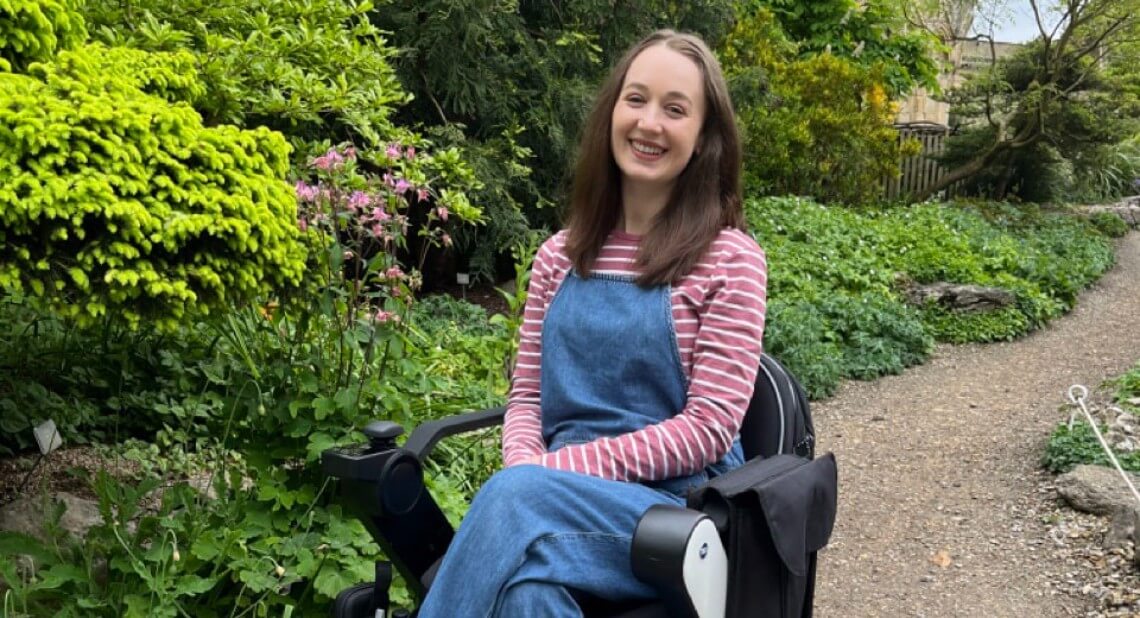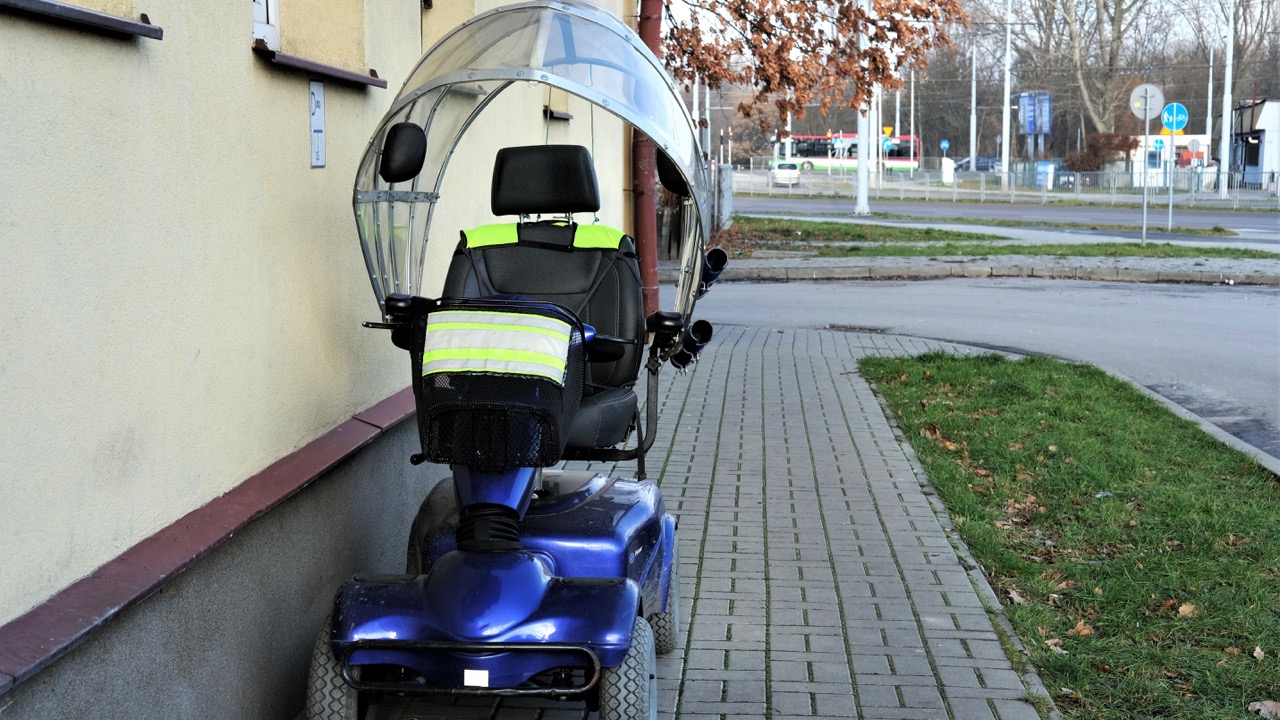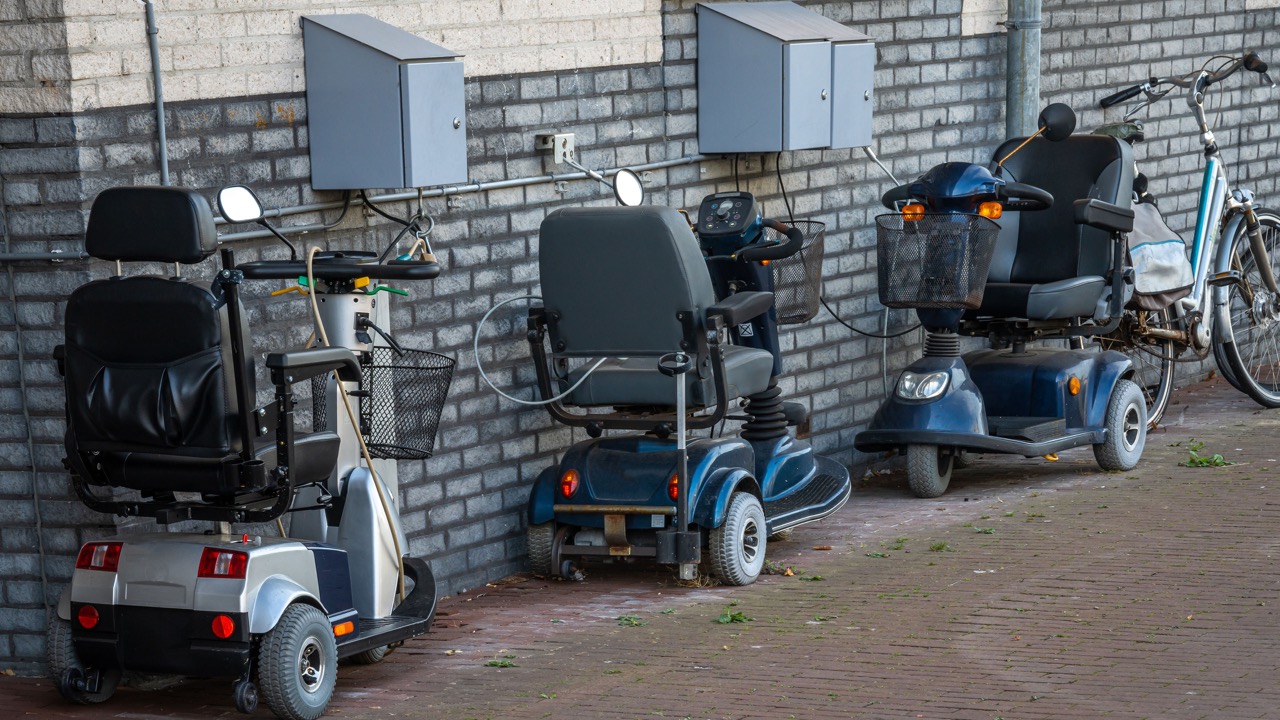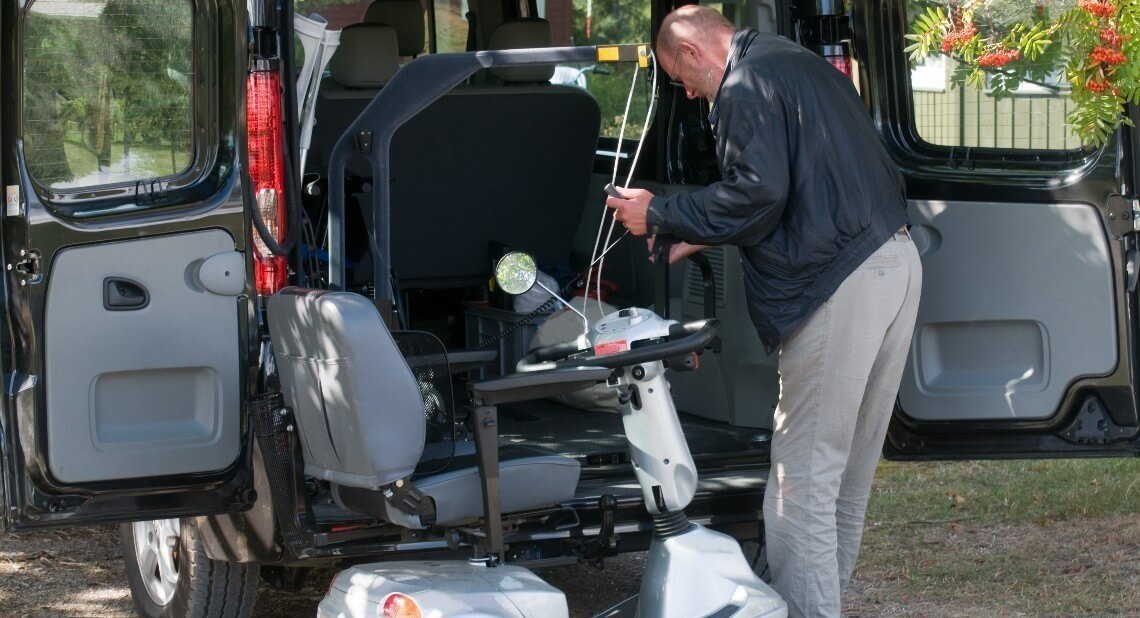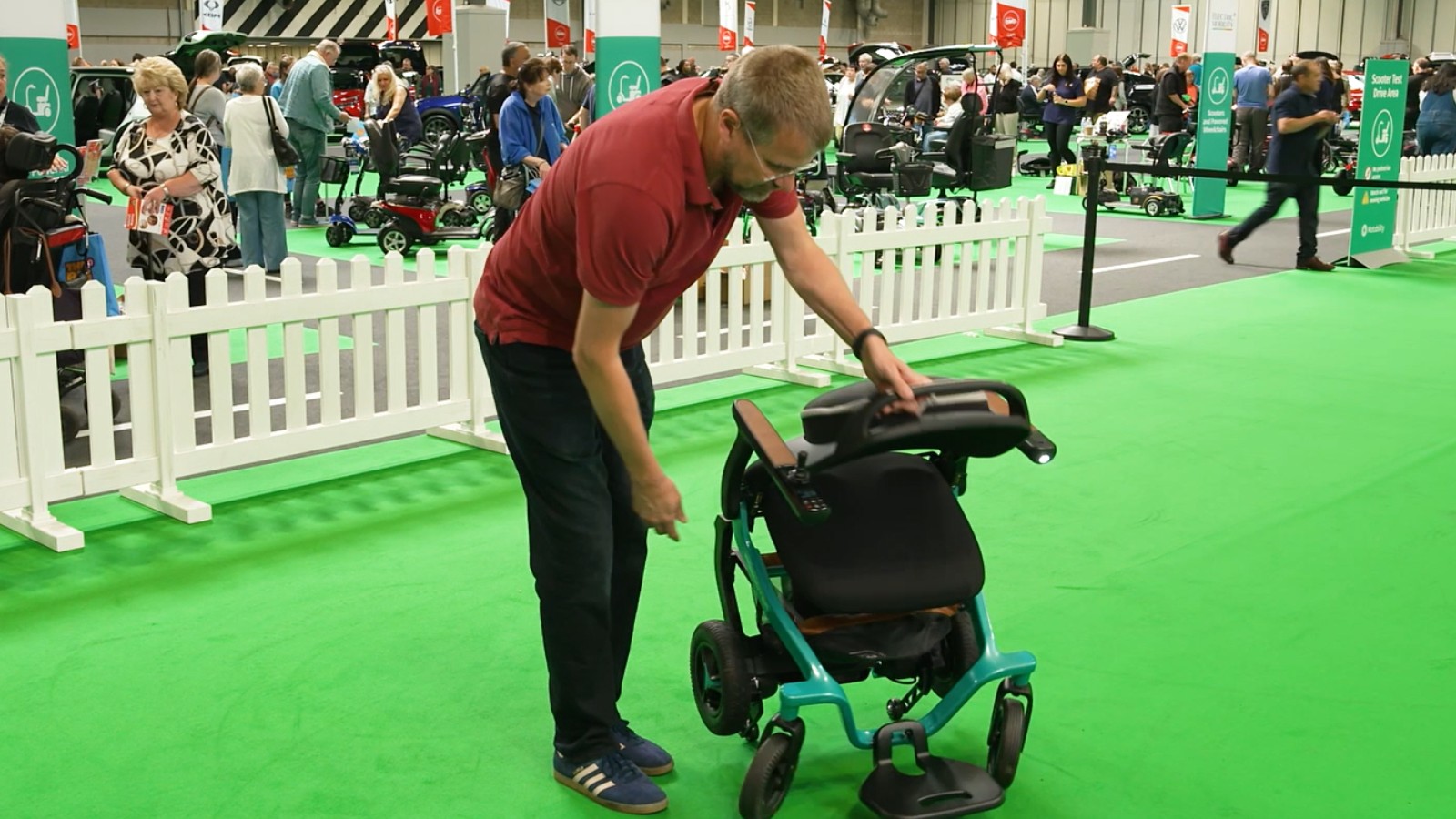Storing your powered wheelchair or scooter can be difficult if space and access are limited. But no matter where you live or what mobility aids you have, there are ways to make it work for you. In this article, disability writer Pippa Stacey shares her experience of how to safely store and protect powered wheelchairs and scooters outside of your home.
Here is a list of things that Pippa is mindful of when storing her own powered wheelchair. These tips can also apply to storing any mobility aids you may use.
“I became a powered wheelchair user soon after I moved into my flat. My flat is in a building that is not accessible. This means I cannot store my powered wheelchair indoors, the way I do with my other mobility aids. So, I’ve had to think creatively about how to store it when I’m not using it.”
- Storage space when choosing your mobility aid
- Match your mobility aid to your storage space
- Keep a powered wheelchair or scooter secure in public areas
- Check if you can build a custom storage solution
Storage space when choosing your mobility aid
When you choose your powered wheelchair or mobility scooter, you need to first think about if you can get it into your home. If not, do not worry. There may be lots of other storage areas available to you.
If you live in a house, you may be able to use a garage or garden shed. Measure if there is enough room to get your mobility aid through the door and if there is enough space to store it.
If you live in a flat, you may be able to use shared cupboards or outbuildings on the ground floor. You can ask your landlord or building management company for help to find these areas. Make sure you also ask them for permission for maximum safety.
Think about how accessible the routes are to any storage areas. Consider if your mobility aid will fit down any paths or if you need help lifting it at any point.
“There’s a shared cupboard under the stairs in my building where I am allowed to store my manual wheelchair. But it’s not suitable for my powered wheelchair as it is too wide to get down the corridors to reach the cupboard.”
Pippa recommends thinking about your storage area when you choose your next mobility aid model.
“I wish I had thought more carefully about storage space before I got my first powered wheelchair. I just chose the model and figured I would problem solve afterwards.”
There are many different types of mobility aids to suit your storage space. Some are foldable, others break down into smaller parts, and many have lightweight frames.
Foldable powered wheelchairs and scooters
Foldable models are easier to move through tight spaces. They can also fit neatly into small cupboards.
Powered wheelchairs that break down into parts
Some powered wheelchairs and scooters can be taken apart into pieces so you can store them individually. This can be helpful if you have smaller storage spaces available to you. Also think about how heavy the battery is. Even if a wheelchair with a power pack breaks down into parts, heavy batteries can be difficult to lift on your own.
Lightweight powered wheelchairs
If your storage area needs you or someone else to lift your mobility aid, look for a lightweight model. Aluminium frames are the most lightweight and easy to move.
“My first powered wheelchair was the Eden Comet, and my current model is the Whill C2. Both can be broken down into parts. However, I try to avoid taking my powered wheelchair apart to store it. This is because I have chronic pain and limited energy. My quality of life has improved a lot since having my new, much lighter battery.”
Battery charging access
Think about if your storage area has a plug socket to charge your powered wheelchair or scooter. If not, keep a small trolley on wheels nearby, so you can place the battery on it and take it to the nearest plug socket rather than have to carry it yourself.
Pippa currently stores her powered wheelchair in her building’s communal bike shed. This is a locked and enclosed area under cover, but she takes other measures to keep her powered wheelchair safe. Here are her top tips:
Use a bike lock
You can put a personal bike lock around the base of your mobility aid. Lock it to a part of the shed, for example, metal racks, for extra security.
Manually lock your powered wheelchair
Many powered wheelchairs have features that block the steering when not in use. Some newer models can be locked and unlocked using an app on your phone.
Find out more about how to keep your scooter or powered wheelchair safe and secure.
Get a powered wheelchair or scooter cover
This is a tarp-like, waterproof material to cover your mobility aid to protect it from wind or rain. These are available from most mobility shops, as well as online. If you’re unsure what size you need, always get the size up. Cover as much of the powered wheelchair or scooter as possible, including the base and wheels to stop it from rusting.
Wipe away any water
Keep a cloth handy to wipe any drops of water that get through the cover and keep the frame clean. This is especially important for electric mobility aids to avoid damage and keep them in the best possible condition for as long as possible.
Check if you can build a custom storage solution
After she stored her powered wheelchair outside for years, Pippa has decided to build a storage shed outside her building. She asked the management company that looks after her building for permission to place the new storage shed nearer the entrance.
The shed will be an enclosed, free-standing structure, and will reduce how far Pippa needs to walk to access it. The shed has been funded by Pippa and she is working with a local joiner to come up with a design.
“I’ve decided to pay for a custom, weatherproof one. It will be built to fit the dimensions of my new powered wheelchair, which has big front omni-wheels.”
Some people with a disability in the UK may be eligible for a Disabled Facilities Grant to help them adapt their home and store their powered wheelchair. You can find more information on the government website and see how it can help you.
Interested in joining the Scheme?
The Motability Scheme makes leasing a car, Wheelchair Accessible Vehicle (WAV), powered wheelchair or scooter an easy, hassle-free experience. With the Scheme, you can exchange part or all of your qualifying mobility allowance to lease a brand-new vehicle of your choice. Insurance, breakdown assistance, servicing and maintenance are already arranged and included in the price you pay, so you can enjoy the freedom that comes with a worry-free lease.
- Check if you’re eligible to join the Scheme
- Request a free information pack
- Find a Motability Scheme dealer near you
Eligibility
To join the Scheme, you must be in receipt of one of the following mobility allowances:
- Enhanced Rate of the Mobility Component of Personal Independence Payment (PIP)
- Higher Rate Mobility Component of Disability Living Allowance (DLA)
- Higher Rate Mobility Component of Child Disability Payment – Scotland
- War Pensioners’ Mobility Supplement (WPMS)
- Armed Forces Independence Payment (AFIP)
You can easily check whether you’re eligible to join the Motability Scheme by using our eligibility checker tool.
Related articles
Guide to choosing your powered wheelchair
Maintenance tips for your powered wheelchair or scooter
Exploring nature in a powered wheelchair
![]()
